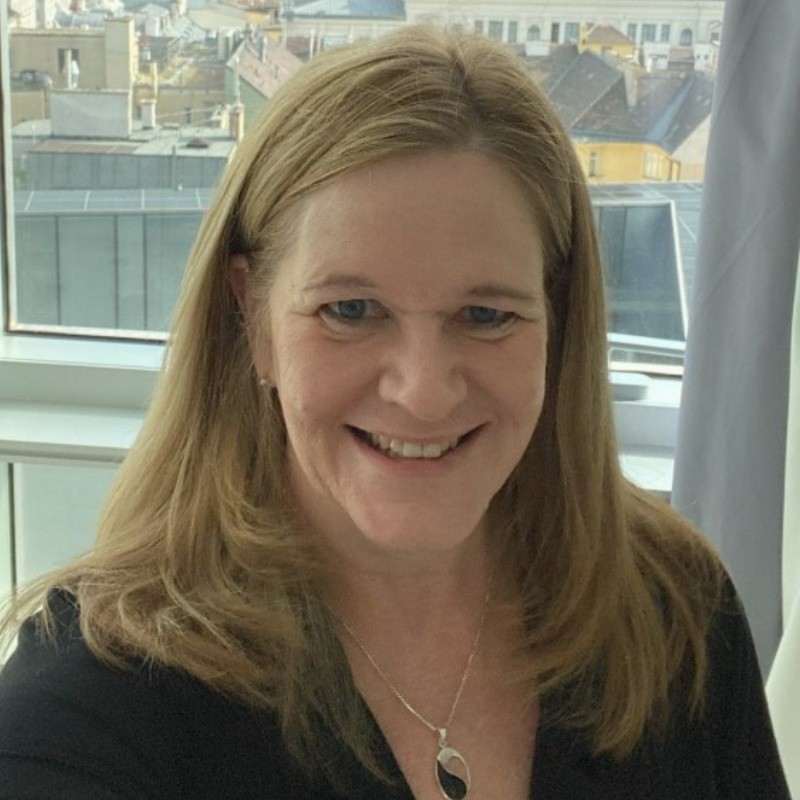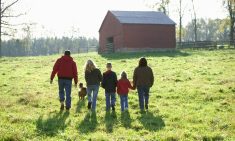At first, going organic seemed the perfect choice for Ryan and Amy Hofford, a young couple intent on taking over the family farm after the early passing of Ryan’s father. Organic had everything going for it. The young couple could cash-flow its low-input approach, they’d excel at its hands-on marketing and they’d be on a path to build up their machinery line. They’d even get to look at expansion.
As they got into it, Ryan often talked up the benefits of organics on social media and in the local coffee shop. He’d quiz conventional farmers why they weren’t going organic too, not because he’s a dyed-in-the-wool believer but because organic was proving to him that it could be good for the land, good for the crops, and good for business.
Then, a decade into it, the Hoffords had two years of exceptional years’ yields. That should have been great news, but it wasn’t. Their yields never got close to that high again. Instead, they slumped, and they just wouldn’t bounce back.
Read Also

What to consider when setting up farm-related business ventures
Things to consider before launching a farm-adjacent side business.
Soil tests pinpointed the problem. As an organic farmer, Ryan says, “you can grow as much nitrogen as you want. But we hit a wall with phosphorus.”
So Ryan, the organic guy at Swan River five hours northwest of Winnipeg, had to become Ryan, the guy who used to be organic. It was the only choice for getting their soil the phosphorus fertilizer it was crying for, even though abandoning organic would prove full of technical challenges.
It was also a big swallow. Ryan found himself online and in town asking for fertilizer and crop protection advice from the same farmers he’d been having debates with about why they should switch.
“I had to eat a lot of crow,” he says.
But in a Canadian agriculture facing the prospect of unpredictable climatic changes and even more unpredictable geopolitical black swans, it was also a lesson in how to survive when everything you built your farm business on suddenly falls apart.
It’s tough to back down from a position once you’ve taken a vocal stance, Ryan agrees. But that isn’t his only learning. It takes smart money management, too, and total commitment plus a lot of skill because so few people have done what you’re about to attempt.
In the beginning
So let’s go back to 2008, the year Ryan and Amy got serious about farming. They had four quarter sections of land but no machinery to use on it and trouble getting financing too. To put it plainly, they weren’t sure what they were doing. But now they were determined.
Ryan had worked on his family’s farm while he was growing up, like most farm kids, and he’d imagined himself one day moving back to the farm. But the Hofford family farm was small, and a few years after he finished high school, Ryan headed west to find work in Calgary.
With none of his three kids left on the farm, Ryan’s father took a job offer from Agriculture and Agri-Food Canada, even though the job was in Winnipeg, a five-hour drive from the farm. The family auctioned off their farm equipment, but hung onto the farmland, seeding it down to alfalfa and renting it out.
Ryan did well in Alberta. He liked his job and reconnected with his now-wife Amy, who had also grown up in Swan River, but as a town girl, not on a farm. They were happy in Alberta and planning a life out west. “We were quite content out there,” Ryan says.
Then the Hofford family changed. Not long after he left the farm, Ryan’s father was diagnosed with pancreatic cancer and passed away within three months.
After their father’s death, it was still important to Ryan and his sisters to keep the farmland in the family. The siblings and their mother chose the easiest solution: to keep on renting it out. But their alfalfa stands were thinning.
“We knew we had to do something with this land,” Ryan says. Once again, they chose a relatively simple solution. They decided to break the land up, reseed it to hay, and keep leasing it out. Ryan made a trip back to the farm to do the work.
But while he was out in the field, Ryan’s thoughts started to snowball. “Is this the best thing for the land?” he kept asking himself. He could see there were more profitable options.
The bootstrap
So that’s how, in 2008, Ryan and Amy decided to take control of the land themselves and convert most of it to crops. Ryan was 26; Amy was 21. Their move home wasn’t a complete surprise to Ryan’s family and friends. “I knew I was going to end up back here at some point,” Ryan says.
This decision was partly economic, but also emotional. “When your dad passes away, life changes very fast for you.” A connection to the family farm fed into Ryan’s decision, and so did Ryan’s father’s request to have his ashes spread on the Hofford land.
Amy’s move back to Swan River was more surprising. “I thought farming and small-town life was in the past,” she says. “It was very surprising how quickly I ended up back in a small town.”
Starting a farm with no equipment and limited cash was a challenge. “We were new to agriculture, and we didn’t have any credit,” Ryan says. They had very little collateral and nobody to co-sign a loan. Bankers and input suppliers were not impressed. “We couldn’t even get credit for fuel in the first year.” Ryan still finds it hard to believe they got past this rough start.
With low personal spending and two full-time jobs in town, they were able to more than cover their living expenses. But they still needed to keep their farm input costs to a minimum. They found a solution with low input costs and potentially high revenues.
“Organic farming fit really well,” Ryan says. Not needing to buy synthetic fertilizer and crop protection products, they could keep their cash needs low. “Any money we had available to use, we had to buy equipment.”
Organic farming was a relatively low-cost way to get on their feet, and they also saw it as a lower-risk enterprise. With less money on the line, they had less to lose, and they found this comforting. “We didn’t know how good we’d be at farming,” Ryan says. In 2023, Ryan can make this comment as a joke and laugh a little. But for a young couple in their 20s starting a new life and a new farm, this was a painful truth that kept them awake at night.

The tough slog
Research, learning and hard work were the not-so-secret keys to the Hoffords’ success in organic agriculture.
On weekdays, Amy worked for an accounting firm in Swan River. “I started as a receptionist and worked my way up,” she says. On the job, Amy learned basic bookkeeping and business analysis skills, including how to understand balance sheets, follow tax rules and submit GST forms. It was helpful that she loved spreadsheets. Her new skills were invaluable on the farm. “That was definitely great knowledge,” Ryan says.
Ryan learned organic farming through research and experimentation. “We were always doing clover plow-downs, trying to build nutrients up,” Ryan says. Amy agrees: “We were having good results, sticking to our rotation plans, and trying to do everything right.”
Soon they had a positive cash flow, but they were still careful about how they spent their money. As Ryan says, “We saved every penny.” Amy bought a small-scale flour mill and sold organic flour in town for extra income. “We learned how to do as much as possible with as little as possible,” Ryan says. They were slowly but surely growing the farm they wanted.
Within a decade, things were going well. “We upgraded our equipment and infrastructure fairly fast in the first years,” Ryan says. They also bought some cattle to make the most of the land that was best preserved as pasture. Amy was able to leave her job at the accounting firm to stay home with their children, born in 2012 (Aubree), and 2016 (Ronan).
Things were going so well for them the Hoffords wondered why every farmer wasn’t farming organically. Ryan took that question to social media and sometimes to the coffee shop. He spent time online explaining the benefits of organic farming to conventional farmers, and got involved in social media debates about it.
When the Hoffords grew high-yielding crops and sold them for organic price premiums in 2017 and 2018, their business model was confirmed.
The turning point
Their above-average crops in 2017 and 2018 took a lot of nutrients out of their fields. They could use organic methods to replace the nitrogen, but they struggled to find an organic-approved method to return phosphorus to the soil. They tried growing alfalfa varieties with long taproots, to bring up phosphorus from deep below the surface. “That works,” Ryan said. “But when you’re getting 60-bushel wheat crops, it can’t keep up.” They didn’t have access to enough manure to solve the problem. They couldn’t see another feasible solution for their location and soil conditions.
Of course, phosphorus isn’t a limiting factor for all organic farmers; many find workable organic solutions. But the Hoffords could not find an organic solution for their specific problem.
“As the years went on, our soil was getting worse,” Amy says. Their situation wasn’t viable for the long run and their shortage of phosphorus kept lowering their yields. “It was starting to compound quite fast,” Ryan says.
The long-term future was becoming more important to the Hoffords as their children were getting older and loving farm life. Ryan and Amy were already thinking about how they might pass the farm on to Aubree and Ronan. But with yield-limiting phosphorus levels, Amy says, “we would’ve just been handing them a problem. We needed to do something different.”

The pivot
For the Hoffords, “different” was a switch to conventional farming. In 2020, they pulled two quarters of land out of their organic rotation and seeded them to canola, using phosphorus fertilizer.
In 2021, they took all of their farmland out of the organic certification program and used conventional inputs across the farm. Because they had managed their cash carefully during their years of organic farming, they were able to self-finance the change. “The first two years, we paid cash for all of our inputs,” Ryan says.
They changed their agronomy, they changed their cash-flow plans, and of course, they changed their mindsets. They had built an identity as organic farmers. Now they had to rip off that label and humbly ask for advice about chemicals and fertilizer.
When the Hoffords told their friends and neighbours about the change, most of them were too polite to say, “I told you so,” and when Ryan posted about his new status on social media, many of the same farmers he’d debated with now offered helpful advice.
Ryan was relieved to be able to redesign these relationships, moving from offering advice about organics to asking for advice about conventional farming.
Many farmers learn directly from their fathers, but Ryan doesn’t have this option. He sees other farmers his age butting heads with their fathers and struggling with succession planning and strained relationships. “It’s hard to relate to that,” he says. “I’d want nothing more than my dad’s advice sometimes.”
While they’d been able to find lots of resources for farmers switching from conventional to organic agriculture, there were few to help farmers transition the other way.
Local farmers provided good agronomy advice. “They’re farming the same land as I am,” Ryan says. “I’ve been watching them across the fence for years.” Farmers in other locations that he found through social media also provided helpful advice on marketing, chemicals, equipment and repairs. “Whether they’re always right, I don’t know,” Ryan says. He’d learned to ignore advice coming from extreme ends of the spectrum but finds useful information in the middle, and he also found a valuable sounding board. “Sometimes my ideas are maybe a bit off the wall,” Ryan says. When his ideas are unrealistic, he says, “that’s been where those guys kind of shine.”
The Hoffords used the advice they found and learned as they went along. Some lessons were more profitable than others. “We made a lot of mistakes that cost us a lot of money,” Ryan says.
As they’ve done since they first moved back to the farm, the Hoffords continue to manage their farm business as a team. “It’s Amy and I, usually with two kids in tow,” Ryan says. Ryan looks after the farm machinery purchasing and maintenance and does most of the fieldwork. “I love equipment,” Ryan says. He also loves a chance to solve problems with research and experimentation.
While Ryan runs the day-to-day farm operations, Amy cooks, manages the house, and operates the fertilizer tender and the combine when needed. She’s in charge of the bookkeeping and most of the marketing, paying special attention to their cash flow. “She’s forecasting 12 months out at any time,” Ryan says.
The Hoffords still reinvest all they can back into the farm and watch their spending. “We don’t live high on the hog,” Ryan says. He still has a full-time job in town and they don’t spend money on many luxuries, he adds.
“I drive a 2006 RAV4.”
The next move
While they were switching to conventional farming, The Hoffords were offered a chance to expand their farm. “Having a nest egg saved up really helped with that,” Ryan says, and they plan to expand more, or will if they get an opportunity given the strong competition for land in their area.
Other changes may come too. They still have 35 head of cattle but they regularly evaluate whether crops might be a more profitable use of their land. “We’re growing canola on three sides of the pasture,” Ryan says. “Whether the cows will be around in another five years or even two is doubtful.”
Their goal isn’t changing, though. “We hope to be able to provide the farm to these kids as a sustainable operation that can support itself and them both, if they choose,” Amy says. But Aubree and Ronan are still young. It’s impossible to know what farming will look like when they’re ready to take it on.
“Will what’s sustainable today still be sustainable in 30 years?” Ryan asks. Now, though, they know they can adapt.
A system for big pivots
The key to making those big decisions on your farm is to use a system and make decisions intentionally, says Josée Lemoine, CEO and strategy lead for Backswath Management, a farm and agribusiness management consulting company.
First, Lemoine says, consider your vision for the business. “What is the ultimate goal that you have?” Lemoine asks. Based on your vision and goals, you can develop clear criteria to use in your decision-making process.
You’ll have different criteria for every decision, depending on your vision for your farm, and on the type of decision you’re making. A major decision about the structure of the farm will probably include financial criteria, risk management criteria, and some qualitative points. A financial criterion might be: “We want to increase our working capital ratio to 1.5 in five years.” A qualitative criterion could be: “We want to be able to pass our farmland on to our children by 2040.”
Once you have a set of criteria in place, you can use these points to analyze your options. “When you’re looking at alternatives,” Lemoine says, “consider ‘which one gets me there, within what I have established?’” If one of the alternatives would help you pass on your farmland to your children, but would increase your debt-to-equity ratio, it doesn’t meet your criteria, and you’ll have to choose something else.
Evaluating your alternatives against your fixed criteria brings some mathematical rigour to your decision. You can exclude the alternative(s) that don’t meet the criteria. Or, if more than one does, you can weigh your criteria and select the alternative that has the most impact on the most important criteria. But if none of the alternatives can meet all of your criteria, you may decide that none of the alternatives are suitable. Or, you may have to rethink your criteria.
Sometimes, buyer’s remorse strikes after a big decision. This is less likely to happen if you keep your criteria in mind, and you believe in the process you followed, Lemoine says. “You have to trust the process.”
Once you’ve made a decision, she advises, own it. “Take pride in the process you used to make that change,” Lemoine says.
With a sturdy process behind the decision, it should be easy for you to explain your choice to friends, family and most importantly, yourself. You should be able to say “We evaluated alternatives. We developed strong criteria, and this is the decision that is best for us.”
“They were very intentional in what they’ve done,” she says. “You can also make intentional decisions that will keep you lucky.”
– This article was originally published in the December 2023 issue of Country Guide.
















